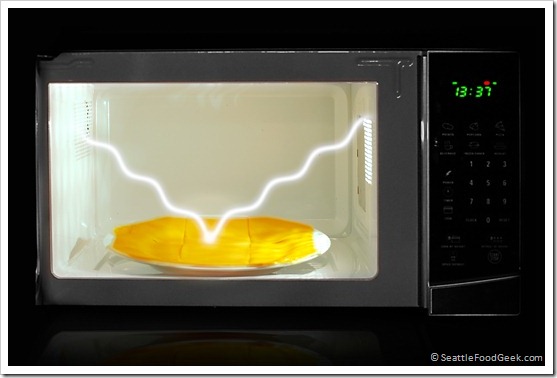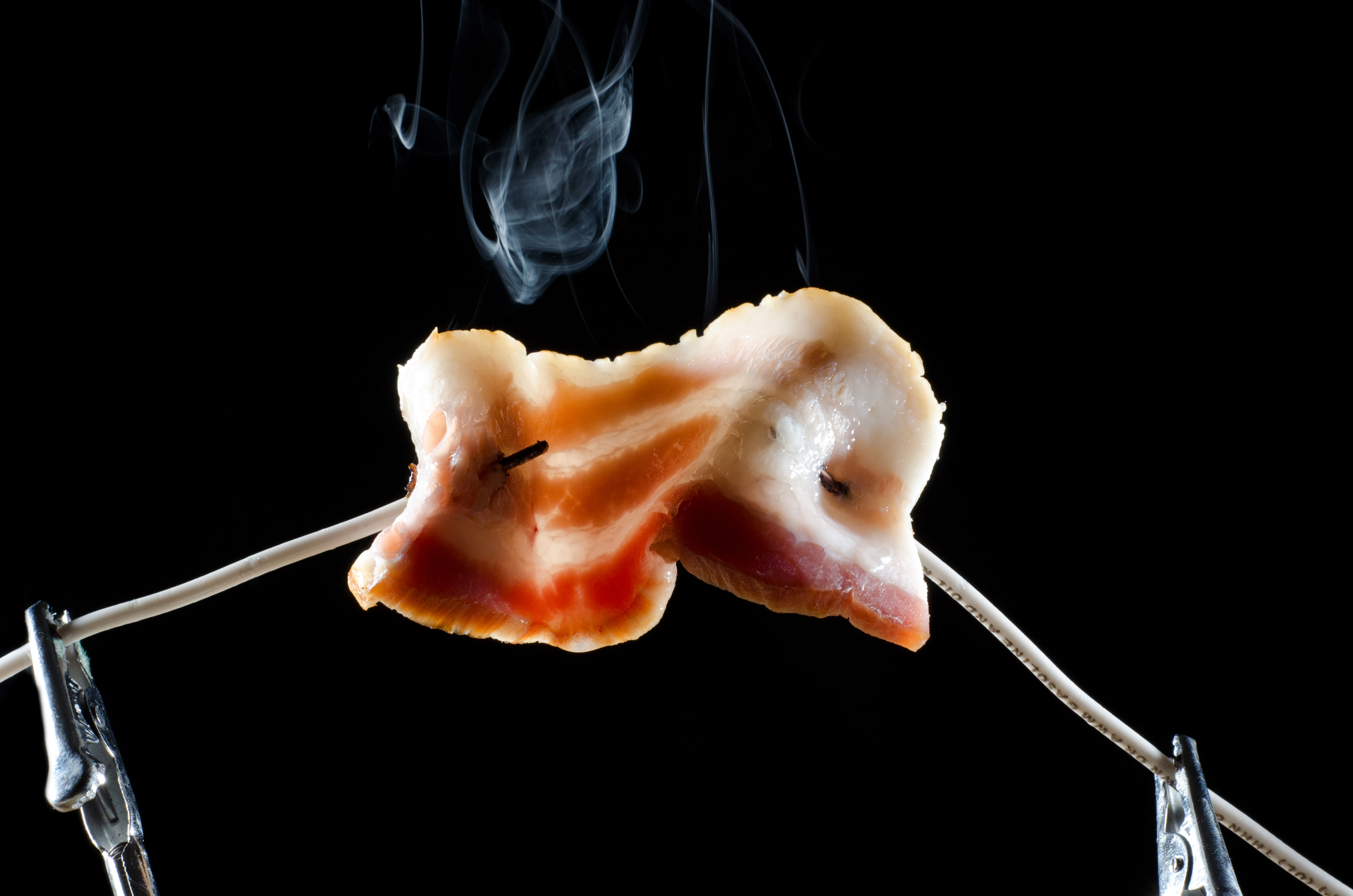
If you’ve been playing along at home, you know that I’m a teeny-tiny bit obsessed with the soon-to-be-released, 2400-page Modernist Cuisine book. Well, my excitement skyrocketed last week when I had the rare privilege to peek at a few hundred [digital] pages of the book, guided by author, CEO and hero of geeks everywhere, Dr. Nathan Myhrvold. I was honored by the invitation, which I can only assume was prompted by a prank phone call from the Make A Wish Foundation on my behalf.
Among the seemingly endless pages of stunning photographs, captivating history and practical instruction, the book is sprinkled with fascinating tidbits like this one. Did you know that you can measure the speed of light using your microwave and a few slices of Kraft Singles?
From the section “Cooking in Modern Ovens”:
You can measure the speed of light by melting cheese, chocolate or even marshmallows in your microwave. Microwave cooking leaves patterns of melting on soft, smooth surfaces that correspond to roughly half the wavelength of a microwave. These patterns are caused by the way the microwaves crisscross in the oven chamber and either combine their energies or cancel one another out.
Here’s how to replicate the experiment at home.
- Cover a flat plate, platter or cardboard disc with soft cheese slices.
- Place the plate in the microwave. If your microwave has a turntable, disable it, or remove the turntable platter and place the plate on an inverted ramekin to bypass the turntable motor.
- Heat on low power until it has melted in several spots.
- Measure the distance, in millimeters, between the centers of any two melt spots. Double that number to get the wavelength.
- Multiply the wavelength by the frequency, in MHz, of your microwave (listed on the back). For example, if your microwave is 2.45GHz (typical), you’d multiply by 2,450,000. [We multiply by MHz instead of GHz to fudge in a factor of 1000, which is the conversion from millimeters to meters.]
- Compare your value to the generally accepted value of 299,792,458 meters per second
The value I calculated was 306,019,200, which is is only off from the actual value by 2%. Not bad for fake cheese!
Between now and the release of the book in March, I’ll be highlighting a few more geeky food tricks from the book. In the meantime, you can find more information at http://modernistcuisine.com/. If you’re ready to pull the trigger, the book is available for pre-order on Amazon.com.

Ohmygoodness, *nerdgasm* ^_^
Love it. 😀
I just discovered your blog and I love it! Keep up the great articles!
Pingback: A Peep into the Speed of Light | Nat Geo Education Blog